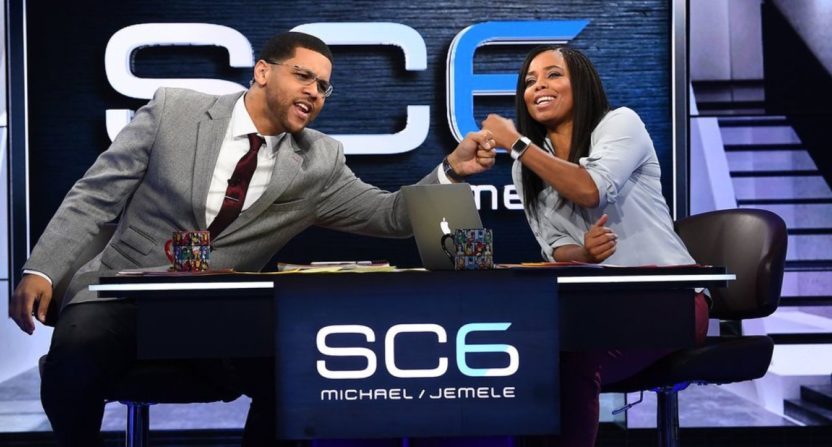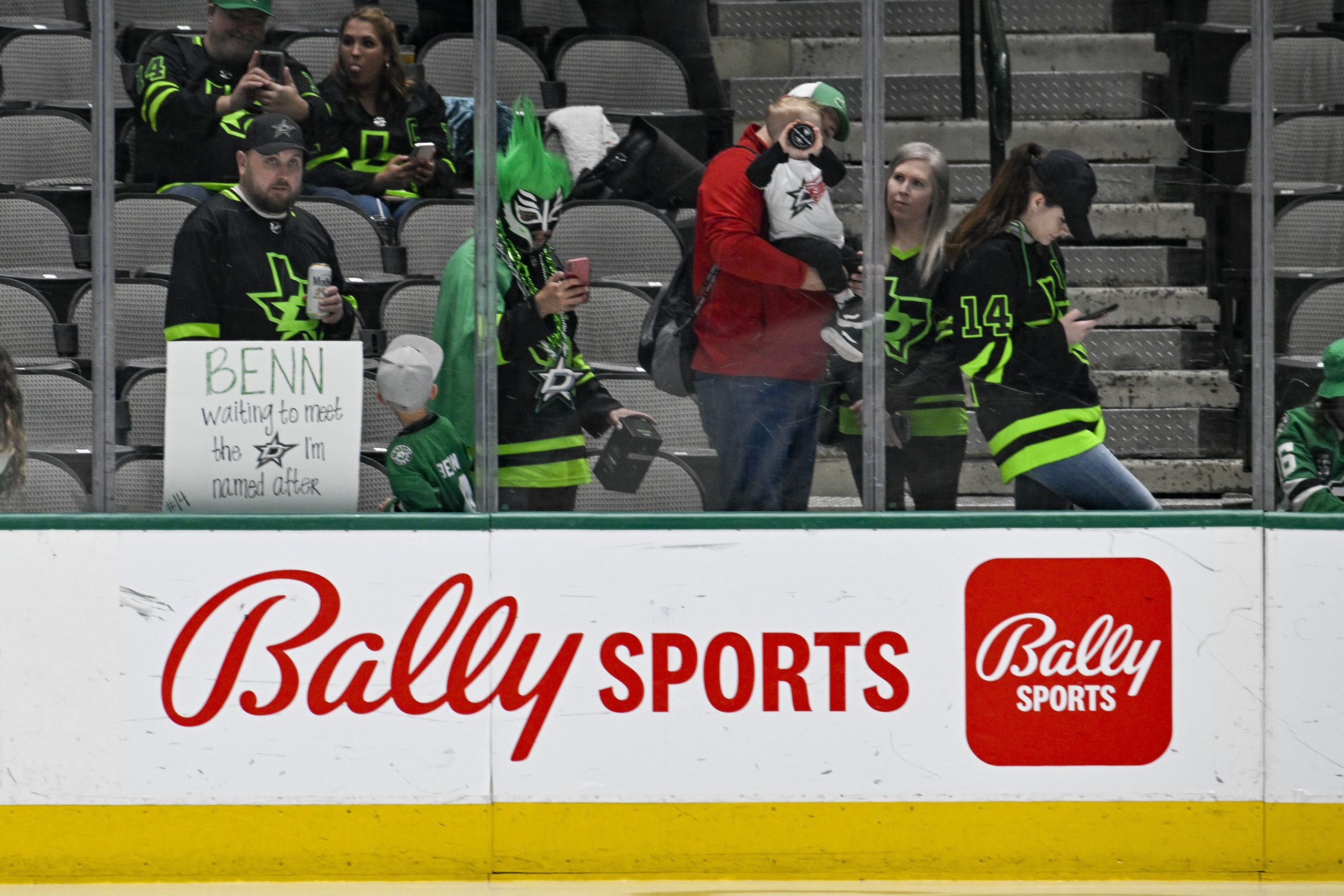ESPN personality Pat McAfee calling a senior and longtime ESPN executive a “rat” always was going to be a big story. That’s even more true with those comments, which accused that executive of “attempting to sabotage our program” with links of “wrong” ratings information, coming on air on a show broadcast on ESPN platforms. (This happened Friday in the final hour of The Pat McAfee Show, which is broadcast on ESPN+ and YouTube, following two hours that also air on linear ESPN). The story is larger still due to McAfee’s target being ESPN executive editor and head of event and studio production Norby Williamson.
Williamson has worked at ESPN since 1985, starting in the mailroom and working his way up to a variety of high-level executive roles. He’s had many notable run-ins with talent in the past and he’s often been accused of particular leaks to the media with a specific agenda to promote talent he likes or criticize talent he doesn’t like. (Unlike with other cases, Williamson has never received any public punishment from ESPN for leaks.)
The below tweet is from 2021. @JimMiller said this in 2020….
I would say it's a terribly kept secret, but it's not even that. Everyone just knows. https://t.co/dotBnebfCc pic.twitter.com/J98VHCAu01
— Ben Koo (@bkoo) January 5, 2024
Maybe some of the most notable conversations around Williamson and leaks came around the highly-discussed SC6 Michael/Jemele version of SportsCenter with Jemele Hill and Michael Smith. That show aired on ESPN from February 2017 to March 2018 (without Hill for its last month), and it sparked intense debate both before and after its run.
Hill had one of the most notable Twitter/X comments on the current McAfee/Williamson dustup Friday:
I can relate. https://t.co/57q99SIHHd
— Jemele Hill (@jemelehill) January 5, 2024
There have always been ESPN shows embraced by one faction within Bristol and blasted by others. And ESPN and parent company Disney have always had major factions, as shown through serious writeups like the James Miller/Tom Shales Those Guys Have All The Fun oral history, more recent discussions of the Bob Iger/Bob Chapek wars, and funnier projects like our 2014 ESPN/Game of Thrones analysis.
The SC6/Williamson discussion there has long stood out as unusual, especially for how ratings information was wielded both through media leaks and through ESPN PR releases. It’s fascinating to have Hill now weighing in on this in a public forum with a seemingly strong endorsement of a criticism of Williamson. Her tweet also got some further comment from Michelle Beadle:
Well well well…😂
— Michelle Beadle (@MichelleDBeadle) January 5, 2024
Let’s go back to what exactly went down with SC6. One thing that is quite notable about it is that that very unique and different SportsCenter came during one of the few periods over the last decades where Williamson was not directly in charge of the SportsCenter franchise. At the time of SC6‘s inception, Rob King was the senior vice president of SportsCenter and news, and he was the one speaking about how he wanted to shift the SportsCenter approach to be more conversational, go beyond linear TV, and connect with the followings that Smith and Hill had built with younger audiences on social platforms. (Hey, that sounds like many of the discussions around McAfee joining ESPN.) And that made some sense given the wider conversations at that time about traditional SportsCenter (and FS1 version Fox Sports Live) not connecting with younger audiences.
By the time of SC6‘s demise, Williamson was back in charge of SportsCenter (a role he took in a September 2017 executive reshuffle). And he was very much back to an approach that focused on the show’s format rather than the individual personalities anchoring it. That had long been a tension, including with Keith Olbermann and Dan Patrick’s “The Big Show” version in the 1990s, discussed extensively in the Miller/Shales book. But it became more of one still under Williamson.
A “What is SportsCenter?” feature that Alex Putterman wrote for AA in March 2018, with a rare and substantial on-the-record comment from Williamson (who had just reassumed control of the franchise and ended SC6 in favor of a return to a more traditional SportsCenter), is an absolute must-read at the moment to understand some of the context here.
“We have to make it a little more relevant,” Williamson told me in his Bristol office. “It was an unbelievable necessity, then things evolved. Now we need to try to restore a little bit the need of it, the relevance.”
…“They did what they did and what they were good at,” Williamson recalled. “But I think the expectation level was a little tough, and the viewer reaction was, wait a minute, I used to get chocolate ice cream here, and now you’re serving me strawberry.”
…Williamson emphasized to me that he doesn’t fault Hill and Smith for the demise of SC6. In his view, the network put the duo in a position to fail — or at least to not succeed — by allowing them to deviate too far from the formula viewers looked for in their time slot. Whereas Van Pelt’s show retained its SportsCenter roots, Williamson came to believe, SC6 had become too centered on its hosts.
“When we went with the Six we didn’t really do our due diligence there,” Williamson said. “I think it got away from us a bit with Michael and Jemele, Michael and Jemele, Michael and Jemele.”
To be clear, those are on-the-record comments about different approaches, not the ratings leaks with the narrative that McAfee is complaining about here. And we do not currently have any explicit proof of Williamson leaking any ratings information to anyone; that is a thing that McAfee has accused him of, and that other people have accused him of over time, but we have no first-hand knowledge of it. But it’s worth discussing the ratings narrative around SC6 both during its run and afterward.
During the run of SC6, much was made of its declines relative to a more traditional 6 p.m. ET SportsCenter the previous year. But there was missed context there; as ratings observers, including those writing at this site, noted, that was a time of heavy cord-cutting. And the SC6 declines were often more favorable than or in line with the year-over-year drops seen at less-controversial returning shows like Pardon The Interruption.
A “viewers rejected SC6” narrative, such as what Williamson tried to put forth in that above feature, doesn’t really hold water given the overall ESPN ratings context of that time. There is certainly an argument that SC6 wasn’t the right programming choice for ESPN at that point, especially given all the controversy Hill wound up involved in with her Donald Trump tweets (and subsequent suspension for a different tweet). But it’s not a clear ratings-alone argument. That merits further discussion of the ratings narrative around SC6.
In general, while specific ratings numbers are objective data points, discussion of them can be quite subjective. Ratings wind up discussed in a wide variety of contexts, from year-over-year comparisons with similar content to changing cord-cutting and out-of-home viewing metrics. And network releases on ratings certainly have an agenda.
That isn’t necessarily terrible. Networks can do that if they please, and the hard information they supply in those releases is often useful for outside objective analysis. But it’s worth keeping in mind that network releases are designed to make their numbers look as good as possible. And what’s really interesting there is the unusual case where the studio show’s year-over-year numbers versus a timeslot predecessor are highly-emphasized, i.e. “Our past programming was bad, but look how much better our current programming is!”
That happened repeatedly with SC6. The King-conceived show with Hill and Smith was followed by a much more back-to-basics SportsCenter with Sage Steele and Kevin Negandhi. And ESPN PR sent out a surprising number of releases specifically on ratings growth with that pair, with some of those releases even emphasizing that they were just there to talk sports and not anything potentially controversial (amusing considering what eventually happened with Steele and ESPN). Here’s one of those, from June 2018:
Viewers are responding to the 6 p.m. ET SportsCenter, with the program on track for four consecutive months of year-over-year viewership growth.
With Sage Steele and Kevin Negandhi taking over as consistent anchors on May 14, the program averaged 531,000 viewers through the rest of the month, up 19 percent over the 447,000 average for the same period in 2017.
The 6 p.m. SportsCenter has been keying on delivering fans up-to-the-minute news, previews and analysis of the night’s slate of games and events. For the quarter of April, May and June to date, the program has averaged 491,000 viewers, a six percent rise over the average of 463,000 for the same period last year.
Of course, that’s not a media leak. That’s a corporate release. It’s one relying on Nielsen data that is available to any Nielsen subscriber rather than purely internal data (the internal data discussion has come up with Amazon and Thursday Night Football, ESPN and McAfee social viewing data, and more), and it’s not misstating any facts.
But the ESPN PR decisions to spend that amount of time, energy, and resources promoting not just their new SportsCenter viewership, but specifically its growth versus SC6, combined with the SportsCenter franchise oversight shift from King to Williamson (as well as the negatively-framed SC6 ratings stories in some outlets during its run), provoked some skepticism from many (including this site) on how those numbers were being wielded. That came up again, as with the 2019 decision to cancel the daily Outside The Lines and change it into SportsCenter segments, with a bizarre public claim from Williamson that they were “expanding” OTL. (They were “expanding” it for only those like Williamson who believe in a generic SportsCenter over everything motto, not those who believe or believed in other ESPN brands.)
Again, this is not a claim to have hard-and-fast evidence on anything in particular coming from Williamson. The ESPN corporate structure has often been convoluted, and there are many potential sources for any given media story. But, as Miller said in 2020, it’s well known in sports media circles that “there are certain journalists out there that [Williamson] is more friendly with and we certainly can see that.”
While Williamson hasn’t always been known to the general public (apart from the occasional appearance in, say, a Deadspin pink gorilla story), he has been an extremely powerful ESPN figure for decades. Those in the sports media realm have long recognized sourcing and framing in stories that feel like they could be tied to him, even if it hasn’t been provable from the outside. So it’s fascinating to see not just McAfee call him out by name but to see former ESPN personalities like Hill and Beadle weighing in on that publicly in some fashion.







